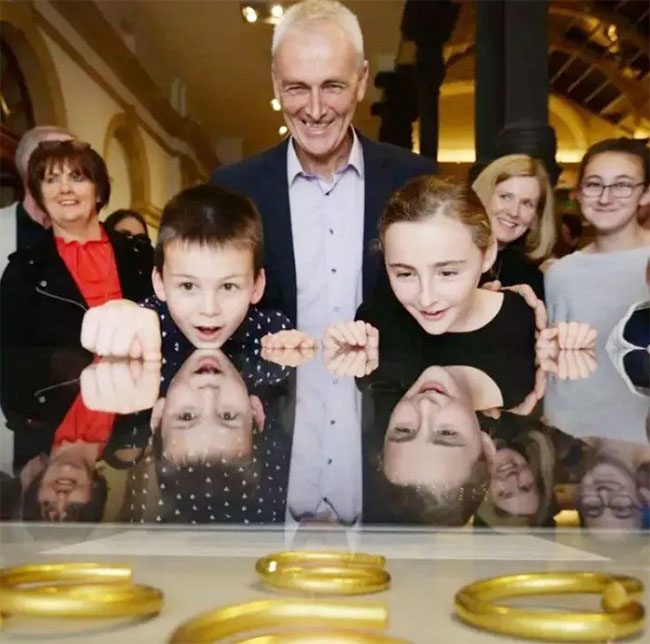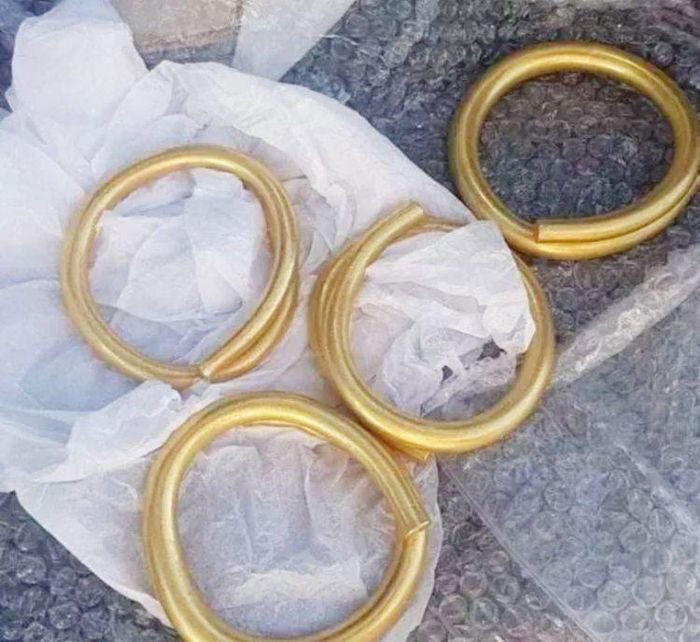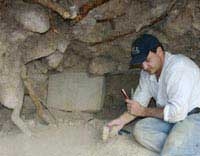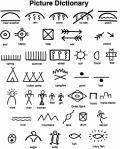A Stroke of Luck: Ancient Gold Hoard Discovered by Irish Farmer
In June 2018, Norman Witherow, a farmer in Ireland, made an incredible discovery while digging a trench: four solid gold rings. These artifacts date back to at least the Bronze Age and were fortunately buried deep beneath the water, sparing them from the effects of the digging machinery.


Four solid gold rings weighing up to 4 kg.
Initially, the gold rings were covered in a layer of dirt, so Norman Witherow took them home to clean. The total weight of the four rings is approximately 4 kg. He then brought them to a friend who specializes in jewelry. This friend recognized the rings as significant artifacts and advised Norman to report his find to local authorities. Consequently, the local museum sent staff to examine the rings.
According to preliminary examination results, these rings may date back to the Bronze Age (2,500-800 BC) and could even be older. They may have served as jewelry, ceremonial items, or a form of currency.
After further analysis, it was discovered that besides the primary component of gold, the four rings also contain small amounts of silver and copper, resembling other gold artifacts from the late Bronze Age that have been excavated in Ireland.
By late November 2018, experts from the Donegal County Museum estimated the value of these four rings to be around £260,000, equivalent to approximately 7.6 billion VND. Subsequently, the rings were returned to Norman, who only needed to pay value-added tax when selling these cultural artifacts.





















































